
Paints and Pintos look exactly the same, their difference is all in their bloodlines. In the simplest of terms, all paints are pintos, but not all pintos are paints.
Pinto - Can be any breed, pinto is simply a collection of white patterns.
Spotted Terminology
Terminology changes from region to region, however there are some fairly universal standards when it comes to white patterned horses.
Piebald

A Paint or Pinto with black base and white spots.
Skewbald
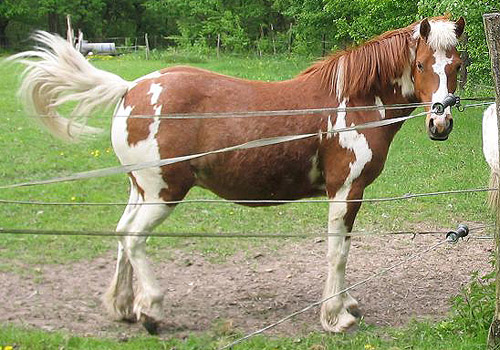
Types of Pinto
Pinto white patterns have an affect on any base, modified or diluted and come in perhaps the widest variety of colors & patterns. Here are examples of the different pinto patterns.
Frame
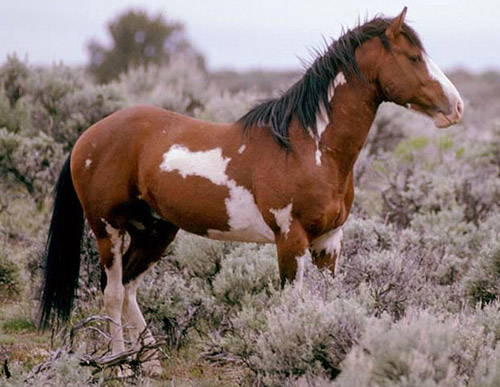
- Overo pattern
- Named because there is a frame of color surrounding the white spots
- Dark legs and head with white markings
- Often one or both eyes are blue
- White on body rarely crosses topline
- Jagged spots with horozontal arrangement
- Typically have pigmented upper lip
- Caused by dominant gene
- Some have almost no body white at all but blue eyes
- Gene in homozygous form is lethal and produces foals with Overo Lethal White Syndrome
- Tests can be taken to determine gene
Sabino
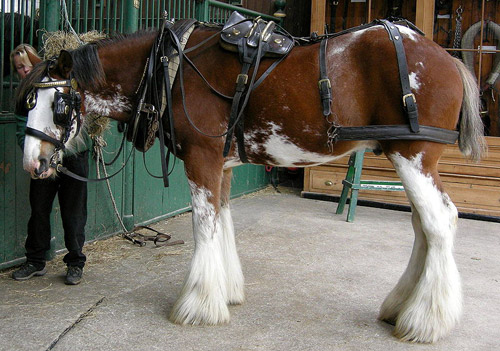
Image from Storye_book
- Name comes from Northern Europe
- In Spanish Sabino means pale red or red roan
- In South America Sabino specifically means flea bitten grey
- Overo spotting pattern
- Occurs in almost all breeds
- Charactoristic white markings on face
- Often display white on lower lip or chin
- May have one blue eye, rarely two
- At least one white leg
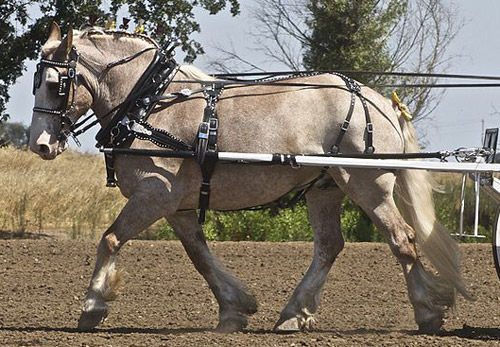
Image from Just Chaos
- Can be totally white when fully expressed with speckled color around ears, base of tail, chest and flanks
- May have white patches on knees
- May roan
- Can have body spotting generally on belly area
- Spots may enlarge with age
- May just display pigmented skin showing through white hair
Splashed White
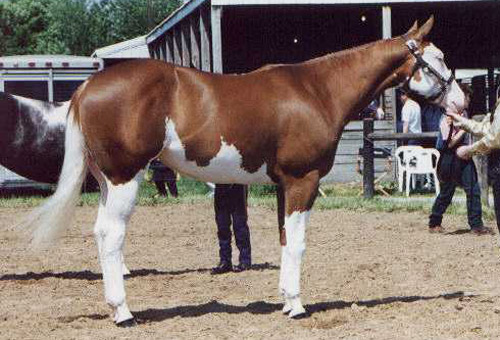
- Often mistaken for Frame or Sabino
- Overo spotting pattern
- Facial markings are generally on bottom of face
- At least on crisp white leg, commonly a hind leg
- Generally spot on belly
- Body spots are distinct white splashes in a horozontal pattern
- Head often all white
- Blue eyes common
Tobiano
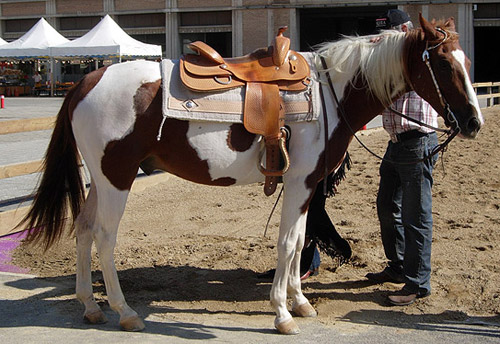
- Most well known and easy to identify
- Created by a dominant gene
- White legs
- Solid colored heads
- Rarely are eyes blue
- White spots round with clean edges arranged in vertical pattern, usually on topline bewteen ears and tail
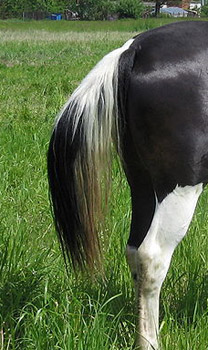
- Tail can be two colors with color at the bottom and white on top
- Can have small spots of color on body called: ink spots, paw prints, or cat tracks
- Pigmented skin can extend past white spots giving them a distinct fade
- This pigmentation is called: shadow paints, ghost paints, ribbon paints or halo paints
- Ermine spots or distal leg spots spots of color on the white legs above the ankle
- Can have color around chestnuts of a white leg
- Can be a solid color with no body spots
Tovero
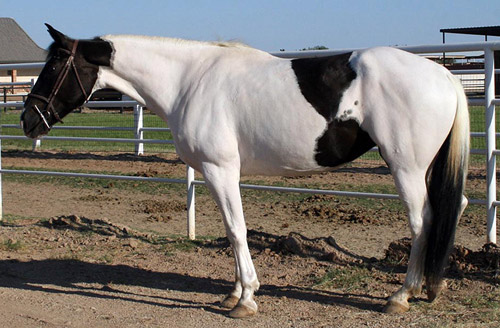
Image from Ride a Draft
- A combination of tobiano and overo characteristics and genetics
- Hard to categorize expression of this white pattern because it is different from animal to animal
- Markings are isolated on a white field
- One or both eyes are generally blue
- Often display spots on their muzzle
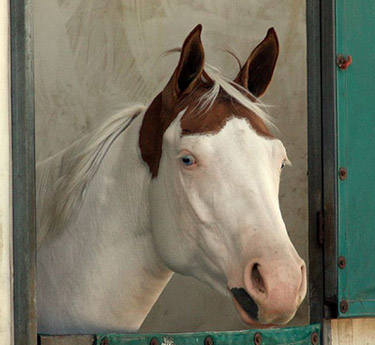
Image from Just Chaos
- White bodies with colored heads often called moroccan pattern or ‘medicine hats‘
- North Americans call ‘medicine hat‘ when only the ears and top of the head have color
- Spots found on chest, neck, flank and base of tail in varying sizes
- Spots on or around the ears which can expand to cover forehead and eyes
Dominant White
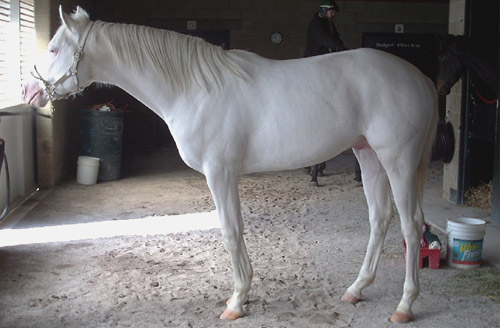
Image from Countercanter
- A family of sabino spotting patterns
- Dominantly inherited genes similar to human piebaldism
- Are often all white and considered “true whites”
Mixed Patterns
Animals can carry more than one white pattern in their genetics, contributing to the variety of white patterns.
Pintaloosa
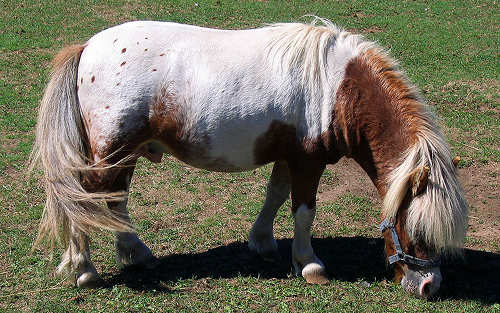
- Mix of Tobiano, Frame, Sabino and Leopard complex pattern

I have a really beautiful pinto horse jumper named Othello :)
ReplyDeletehttps://www.youtube.com/watch?v=vhHjMaGQzeY